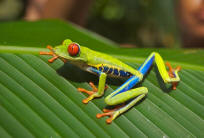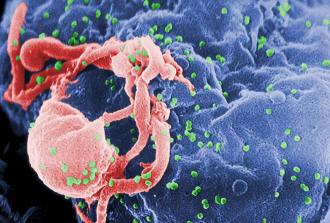In the past, many students from the Organismal Biology class have chosen to construct websites on living things that the Epstein-Barr virus, or a relative of it, can infect. Because viruses are considered "psuedo-living" there aren't many websites made about them.
If you enjoyed this page and wish to learn more about viruses you can check out the page, Human Immunodeficiancy Virus (HIV), made by a past student. While this virus is a far off relative off the Epstein-Barr virus, they have very different pathologies and structures. There is also a site about the Chronic Wasting Disease Prion, which was also made by a former student. It shows information about prions, smaller structures than even viruses, who attack organisms and cause disease.
As
stated in the
taxonomy
of the Epstein-Barr Virus, the relatives of this virus are
able to infect virtually any vertebrate and even some invertebrates.
When the
ICTV
created the new order, Herpesvirales,
and created the new lower classifications for viruses they grouped
them by hosts.
The Herpesviridae family contains the mammal, bird and reptile viruses.
Chlamydosaurus kingii (frilled neck
lizard) and
Steptopelia turtur (Turtle Dove)
are examples of this family of viruses. Some of the viruses in
this family only infect mammals such as the
Pongo abelii
(Sumatran Orangutan). Another family,
Malacoherpesviridae, only
infects
contains the mammal, bird and reptile viruses.
Chlamydosaurus kingii (frilled neck
lizard) and
Steptopelia turtur (Turtle Dove)
are examples of this family of viruses. Some of the viruses in
this family only infect mammals such as the
Pongo abelii
(Sumatran Orangutan). Another family,
Malacoherpesviridae, only
infects
 bivalves such as
the Eastern Oyster.
Frogs and Fish can also be infected by yet another kind of
virus family, Alloherpesviridae. Gadus morhua
(Atlantic Cod) and
Agalychnis callidryas
(Red eyed Tree Frog) are examples
of this family's hosts.
bivalves such as
the Eastern Oyster.
Frogs and Fish can also be infected by yet another kind of
virus family, Alloherpesviridae. Gadus morhua
(Atlantic Cod) and
Agalychnis callidryas
(Red eyed Tree Frog) are examples
of this family's hosts.
While the organisms listed above are only a few of the available hosts for the Epstein-Barr relatives and strains, there are many more available for viewing on multipleorganisms.net.
To better understand the habitat of the virus in relation to its hosts, click here!
